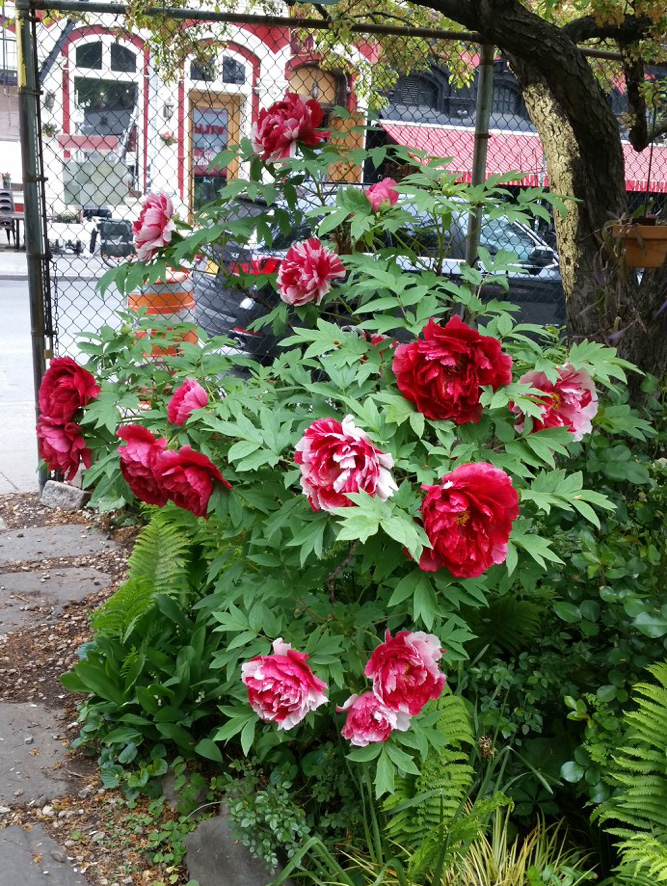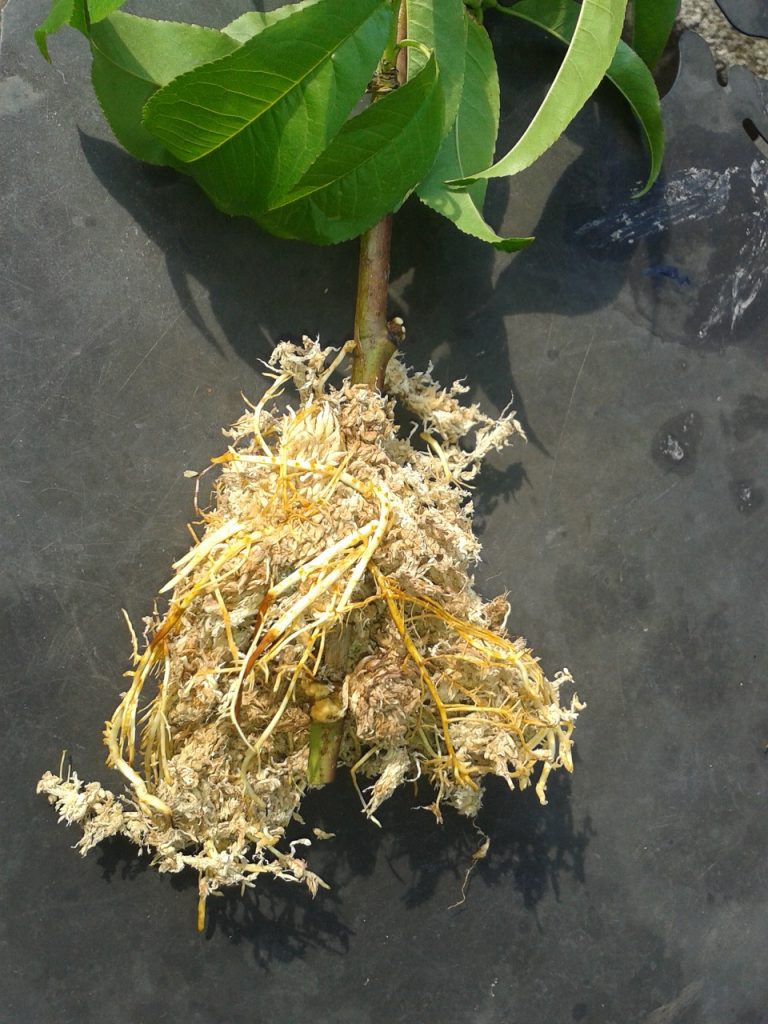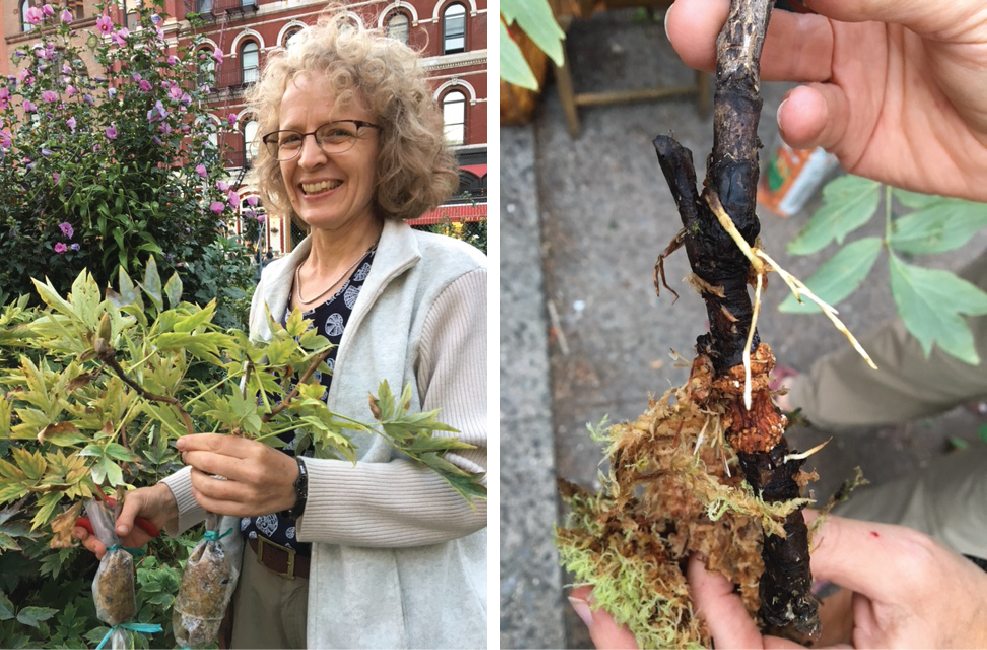This following post has been in the making for a few months now. It is finally time to publish it. Remember the pretty tree peonies that bloomed in May?

The striped tree peony at the entrance to our garden.
We have three mature plants, which were all in need of some trimming. And wouldn’t it be wonderful if we could propagate these lovely plants at the same time? That is what we attempted at the beginning of June of last year.
The method of choice is called airlayering. We had tried it previously successfully with our peach tree. The idea is to encourage roots to grow on a branch while it is still on the tree. With the new roots, this branch can be cut off and planted into soil. For the peach tree, it worked really well.

New roots that grew among peat moss on a peach branch over three months in 2015.
Airlayering begins with cutting the bark on a branch all the way around in two places so that a ring of bark can be peeled off completely. This is where the new roots will sprout. To encourage root growth, we also applied some rooting hormone. Now, this branch is wrapped with wet peat moss. The peat moss is antiseptic and prevents bacterial growth in addition to providing a moist environment. To keep everything moist, the branch is wrapped in a sheet of plastic, applying a butcher’s fold. The plastic is carefully tied at both ends. Then it is time to wait.

Airlayering. Top row: peeling a ring of bark off a branch; applying rooting hormone; surrounding the branch with moist peat moss. Bottom row: wrapping the peat moss on the branch with a plastic sheet; tying a string tightly on both ends; the final package.
What should happen is this: by cutting the bark, we interrupted the flow of nutrients from the leaves to the roots. Water still flows on the inside of the stem from the roots to the leaves; therefore, the branch will not dry out. The leaves continue to perform photosynthesis and make organic nutrients, which can now fuel root growth at the cut site.
In September, we decided to check on our roots. We wanted to give the new plants a chance to establish themselves in soil before winter arrived.

Here is me with two cuttings. One branch after removal of the peat moss.
The root growth was not as vigorous as we had wished, but the method clearly worked. We potted our new cuttings and hoped for the best.
Now, in February 2017, we know that we were successful. One of our cuttings looks really good and is starting to grow. The mild winter may have helped us here. Seeing these swelling buds is very encouraging. We will try again this year and start a bit earlier in the season to give the roots more time to grow. We can also use this method to propagate roses and other shrubs. Pretty cool, right?

